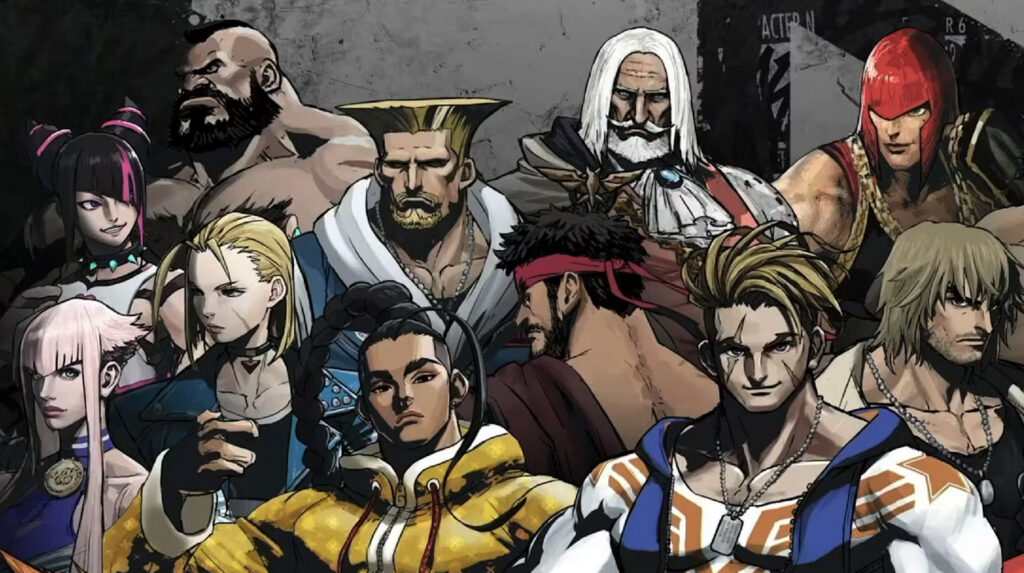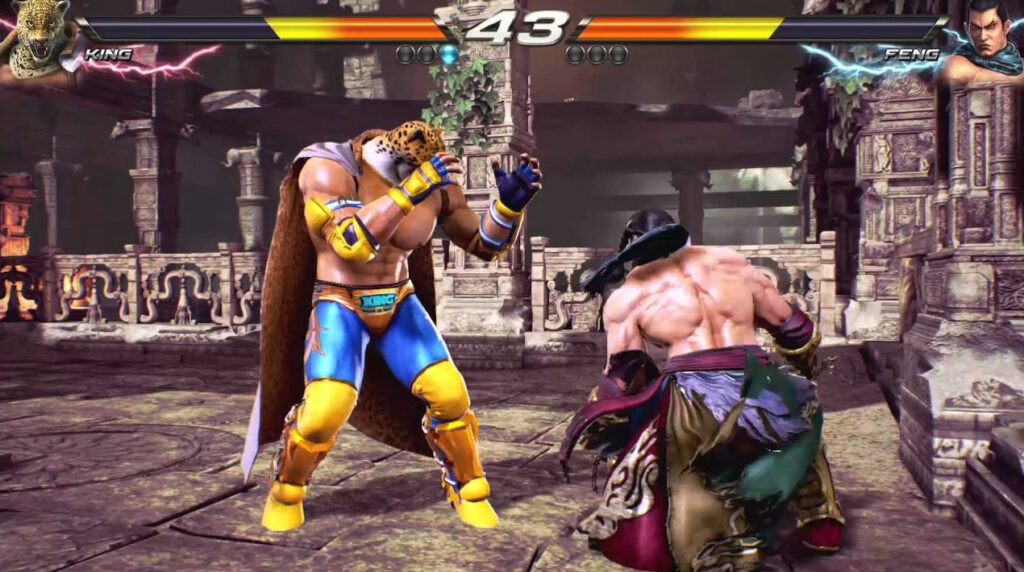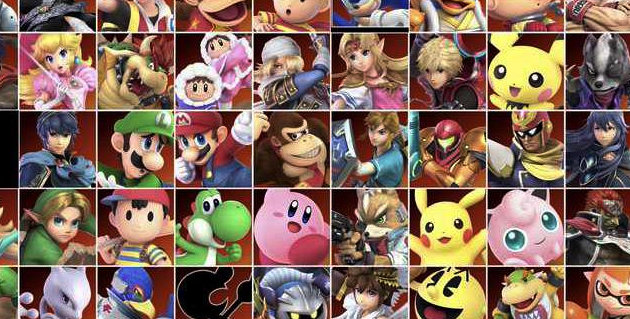Introduction to Soulcalibur
The Soulcalibur series, first launched by Bandai Namco Entertainment in 1995, has cemented its status as a cornerstone of the fighting game genre. Originally conceived as a sequel to the game Soul Edge, the franchise quickly distinguished itself through its unique weapon-based combat system. This innovation brought a new level of depth to gameplay, allowing players to engage in strategic battles while employing a variety of weapons and techniques. Soulcalibur’s blend of intricate mechanics, captivating characters, and visually stunning environments established it as not just a game, but a phenomenon within the fighting game community.
Over the years, the series has evolved through multiple sequels, including notable titles such as Soulcalibur II, III, IV, V, and the most recent installment, Soulcalibur VI. Each iteration has introduced new characters, refined gameplay mechanics, and enhanced visual quality, keeping the franchise fresh and engaging. The series is particularly recognized for its commitment to balancing deep mechanics with accessibility, allowing newcomers to engage without feeling overwhelmed, while still offering advanced techniques for seasoned fighters. This balance is a significant reason why Soulcalibur remains popular among diverse audiences.
Furthermore, the Soulcalibur series has established a rich narrative featuring a diverse cast of characters. From original fighters to new entrants, each character brings unique storylines, backgrounds, and motivations. This narrative depth complements the gameplay, creating a vibrant universe that resonates with players. Overall, Soulcalibur holds a prestigious position within the broader context of fighting games, not only for its innovative mechanics and stories but also for its enduring appeal that continues to capture the hearts of fans around the world. The franchise’s legacy speaks to its significance in shaping the genre and fostering a dedicated community of players.
Innovative Combat System
Soulcalibur has earned a revered status among fighting game enthusiasts, largely due to its innovative combat system that significantly differentiates it from other entries in the genre. Central to this unique gameplay experience is the 8-way run movement system, which allows players to navigate the arena with greater flexibility and control. Unlike traditional 2D fighting games that restrict movement primarily in horizontal planes, the 8-way run enables fighters to move in any direction. This mechanic encourages a dynamic approach to spatial strategy, where players can more readily evade attacks, set up counter-strategies, and create opportunities for punishing their opponents.
Moreover, the weapon-based combat serves as a hallmark of Soulcalibur, further enhancing its appeal. Each character wields a distinct weapon that not only impacts their range and attack style but also contributes to the depth of tactics available during a match. The nuances of weapon types create a variety of combat styles, requiring players to adjust their strategies based on the unique strengths and weaknesses associated with each fighter. This diversity in weaponry fosters a competitive environment where mastering multiple characters becomes essential, thus enriching the game’s overall experience.
Beyond movement and weapon mechanics, Soulcalibur places significant emphasis on strategic depth through its combat philosophy. Players are encouraged to execute not just offensive maneuvers but also defensive tactics and mind games, creating a layered strategy that transcends mere button-mashing. Incorporating guard breaks, parries, and unique character abilities, the game incentivizes players to think critically about their moves and anticipate their opponent’s next actions. This multifaceted approach to combat ensures that matches remain engaging and competitive, ultimately defining Soulcalibur as a pioneer in the fighting game community. Its innovative combat system not only captivates players but also solidifies its status as one of the best fighting games available today.
Diverse and Memorable Characters
The rich tapestry of characters in the Soulcalibur series is one of the primary reasons it is held in such high regard by fighting game fans. This franchise features a diverse roster, encompassing a multitude of fighting styles, unique designs, and compelling backstories that resonate deeply with players. Each character is carefully crafted, bringing forth not only distinct combat techniques but also personalities that players can connect with. From the graceful yet deadly Taki to the steadfast Siegfried, each character adds a layer of depth to the game.
One of the standout features of Soulcalibur is the vast array of customization options available to players. Character customization empowers fans to enhance their gaming experience by tailoring their favorite fighters to match their unique playstyles. Customization options include modifying outfits, choosing weapons, and even altering physical appearances. This flexibility not only diversifies gameplay but also allows players to feel a stronger connection to their characters as they create personalized avatars that reflect their tastes and preferences.
The presence of fan-favorite characters has also contributed significantly to the franchise’s success. Characters such as Ivy, known for her lethal whip sword, and Nightmare, infamous for his imposing presence and tragic backstory, have become iconic within the gaming community. Their intricate designs and memorable moves have solidified their status as staples in fighting game lore. Enthusiasts often form strong attachments to these characters as they evolve through the series, making the exploration of their narratives and development throughout the games an engaging aspect for fans.
Ultimately, the combination of varied character designs, unique fighting styles, and the option for extensive customization fosters a rich environment within Soulcalibur. As fans engage with characters that resonate on multiple levels, the series continues to be celebrated as a landmark in the fighting game genre.
Deep Lore and Storytelling
The Soulcalibur series, renowned for its rich lore and intricate storytelling, captivates fans by weaving extensive narratives that transcend mere gameplay. Set in a fantastical world, the saga revolves around the eternal struggle between good and evil, embodied by iconic weapons, such as the Soul Blade and Soulcalibur. Central to the narrative is the battle for supremacy between these powerful artifacts, with each character harboring their own personal quests that intertwine with this overarching conflict.
Character relationships serve as a pivotal element in the storytelling of Soulcalibur. From the tragic backstory of Siegfried, who grapples with his past as a tormented soul seeking redemption, to the complexities of Ivy’s ambition and conflict with her lineage, players become invested in the tales of these fighters. The relationships developed through in-game dialogues and cinematic cutscenes enrich the characters’ depth, giving players a reason to care about their fates. This emotional investment transforms each encounter into a meaningful experience, deepening the connection between the player and the narrative.
The mythos of Soulcalibur further enhances the franchise’s appeal. Drawing from historical elements and infusing them with fantastical lore, the narrative explores themes of honor, betrayal, and the cyclical nature of conflict. Players are not merely engaging in combat; they are experiencing a saga that resonates with universal themes. The occasional introduction of new characters adds fresh dynamics and perspectives, reinforcing the notion that the story is ever-evolving and expansive.
Overall, the storytelling in the Soulcalibur series is fundamental to its identity, creating a robust framework that elevates gameplay. The deep lore, interwoven character arcs, and rich mythological backdrop not only immerse players in a captivating world but also foster a lasting engagement with the franchise. This involvement keeps Soulcalibur at the forefront of fighting game enthusiasts’ discussions and preferences.
Competitive Scene and Esports Presence
The competitive scene of Soulcalibur has garnered significant attention, establishing the franchise as a staple in the fighting game community. Over the years, various tournaments have emerged, showcasing the talent of players who dedicate their time to mastering the intricate mechanics of the game. Major events like EVO (Evolution Championship Series) and Combo Breaker have frequently featured Soulcalibur tournaments, allowing competitors to demonstrate their skills on a global stage. These tournaments not only highlight exceptional gameplay but also foster a vibrant community of enthusiasts eager to engage with each other.
In the realm of esports, the Soulcalibur series has made substantial strides, attracting sponsorships and audience interest. The investment in competitive events has led to the organization of league systems and online competitions, which present opportunities for emerging players to gain recognition. An essential aspect of maintaining a thriving competitive environment is the careful balance of gameplay. Developers have made consistent efforts to ensure that characters and mechanics are well-balanced, promoting fairness and integrity in competitions. This balancing act is crucial, as it keeps the competitive scene fresh and engaging, providing players with an equal footing.
The community around Soulcalibur plays an equally significant role in supporting competitive players. Through grassroots initiatives, local tournaments, and online forums, fans often come together to create an inclusive atmosphere that celebrates various skill levels. Players can seek advice, share strategies, and build connections that enhance their competitive journey. The dedication of the community not only helps foster talent but also strengthens the bonds among players, which is a cornerstone of the Soulcalibur experience. As the competitive scene continues to evolve, it remains a fundamental element of why fighting game fans hold Soulcalibur in such high regard.
Graphics and Visual Style
The visual presentation of the Soulcalibur series has long been a hallmark of its enduring popularity among fighting game enthusiasts. Character models are meticulously crafted, showcasing a diverse array of fighters, each with unique styles and designs. The series excels in creating visually striking characters that not only stand out individually but also blend coherently within the game’s overarching aesthetic. This attention to detail in character design enhances the players’ connection to their chosen fighters, making them feel more like extensions of the player’s will rather than mere avatars.
Animations play a pivotal role in the overall graphical experience of Soulcalibur. The fluidity and responsiveness of characters during combat bring a sense of realism and dynamism to each encounter. Whether performing elaborate combos or executing special moves, the animation quality maintains a high standard that captivates players. The seamless transitions and attention to motion bring life to each duel, enhancing the thrill of competition. Players often cite this aspect of gameplay as critical to maintaining immersion, as the visual fluidity allows them to effectively gauge their opponents’ movements and react in real-time.
Stage designs further contribute to the immersive visual style of the game. Each arena is uniquely themed, often reflecting various cultures and historical inspirations, which pique players’ interest and engage their senses. The backdrop and environment are not only aesthetically pleasing but also play a functional role in combat, as players navigate through dynamic terrains. Such considerations enrich the gameplay experience while showcasing the impressive graphical fidelity that the series has consistently delivered.
Ultimately, the combination of intricate character models, fluid animations, and thematic stages establishes Soulcalibur as a visually captivating fighting game. This artistic direction, alongside its rich combat mechanics, significantly influences player enjoyment and immersion, solidifying its reputation as one of the best in its genre.
Cross-Platform and Accessibility
One of the significant factors contributing to the enduring popularity of the Soulcalibur series is its emphasis on accessibility and cross-platform play. These elements have transformed the gaming experience, allowing for a more inclusive environment that encourages participation from a diverse range of players. By facilitating interactions between gamers across different platforms, Soulcalibur has successfully expanded its community, allowing friends and competitors to engage regardless of their device choices.
The introduction of cross-play features in recent iterations of Soulcalibur has served to boost its user base considerably. Players can seamlessly connect with one another, whether they are using consoles or PC. This networked gaming experience allows for a more vibrant and engaging multiplayer atmosphere, allowing fans to face off with others without the barriers of hardware limitations. Such accessibility features empower players to join the competitive scene without being tethered to a specific console or online service
Moreover, the game’s mechanics have been designed with accessibility in mind, making it approachable for newcomers while still providing depth for seasoned players. The varied character roster, each with unique abilities and styles, invites diverse playstyles and strategies. This design philosophy encourages players to experiment and invest time in mastering their chosen characters, promoting a sense of ownership and personal progression. By lowering the entry barriers, Soulcalibur enables a broader demographic to enjoy the game.
Ultimately, the combination of cross-platform capabilities and an inclusive design philosophy has played a vital role in establishing Soulcalibur as a beloved title among fighting game enthusiasts. These features have not only expanded its player base but have also fostered a community that is equally welcoming to veterans and novices alike.
Community and Fan Engagement
The Soulcalibur series has cultivated a dedicated and passionate community over the years, which is a significant factor in its status as one of the best fighting games. Central to this community is the remarkable engagement exhibited by its fans. Through various media, players contribute to the ongoing legacy of the franchise by creating and sharing fan art, player-generated content, and strategies in online forums. This creative output not only showcases the enthusiasm of the fans but also fosters a sense of belonging among players.
User-generated content, particularly in the form of videos and tutorials, enhances the gameplay experience for both newcomers and veteran players. Enthusiastic gamers often share their insights on character moves, advanced techniques, and unique strategies, which can be particularly helpful for those looking to improve their skills. This collaborative environment allows players to learn from one another, thereby enriching the overall experience of the Soulcalibur community.
Online forums and social media platforms also play a crucial role in community engagement. Players frequently gather to discuss game mechanics, share tips, and showcase their achievements. These platforms act as a hub for organizing community events, including tournaments and meetups. Such gatherings not only promote healthy competition but also encourage camaraderie among players. Additionally, the developers remain engaged with the community by actively seeking feedback and conducting regular updates, which keeps the player base invested in the game’s ongoing development. This open line of communication fosters trust and excitement, ensuring that player concerns and preferences are taken into consideration.
Ultimately, the vibrant ecosystem surrounding Soulcalibur is bolstered by the passionate involvement of its community. The collaborative efforts of players contribute significantly to the game’s enduring appeal and exemplify why it is considered one of the best fighting games by its dedicated fanbase.
Conclusion: The Enduring Legacy of Soulcalibur
Soulcalibur has carved a distinctive niche within the fighting game genre since its inception, establishing itself as a beloved franchise that resonates with players old and new. The series is renowned for its unique blend of weapon-based combat, intricate character design, and rich storytelling, all of which contribute to its lasting appeal. The gameplay mechanics, particularly the introduction of the 8-way run, set it apart from other titles, allowing for a depth of strategy and movement that has captivated fans over the years.
One of the most significant aspects of Soulcalibur’s legacy is its commitment to character diversity. The game features a variety of fighters, each with distinct fighting styles and backstories, catering to an array of player preferences. This rich roster not only enhances the gaming experience but also allows players to find a character that resonates with them personally. Moreover, the inclusion of guest characters from outside the franchise has kept the series fresh, attracting fans from various gaming communities.
As we look to the future of Soulcalibur, the franchise is poised to continue evolving. New advancements in technology pave the way for enhanced graphics, online play, and greater community engagement, vital for keeping the series relevant in an ever-changing gaming landscape. The continuous support from developers in the form of updates, additional content, and community-focused events suggests a robust path forward, fostering a sense of belonging among fans.
In summary, the reasons why Soulcalibur is considered one of the best fighting game franchises are manifold. Its innovative gameplay, diverse character roster, and commitment to community engagement ensure that it will remain a cherished title for many years to come. Its enduring legacy is not just a reflection of past successes but also a promising outlook for the future of the series and its players.


